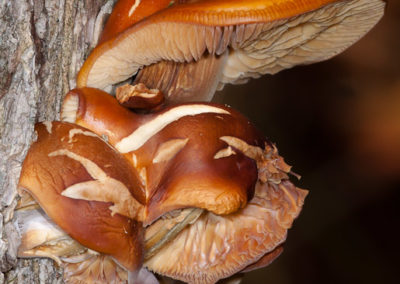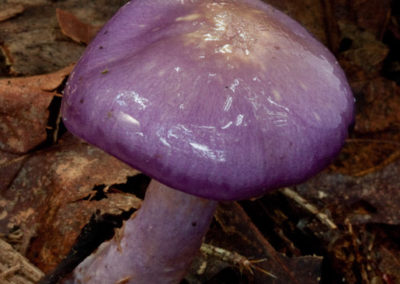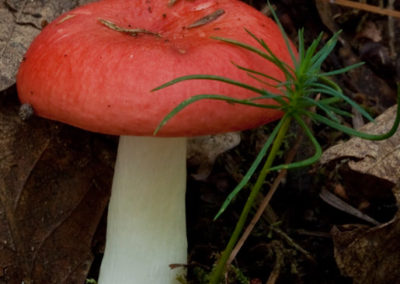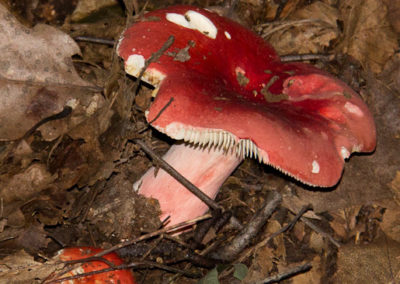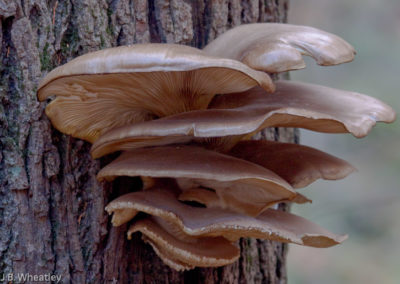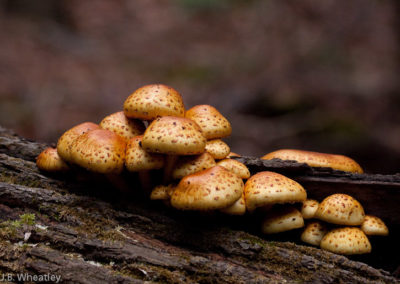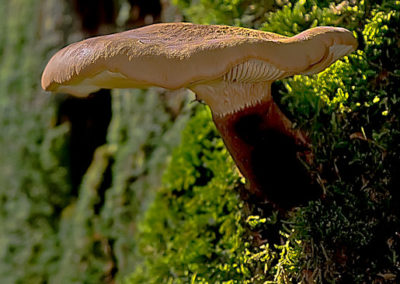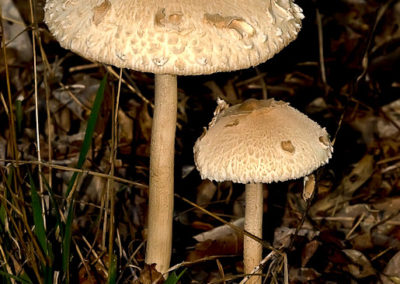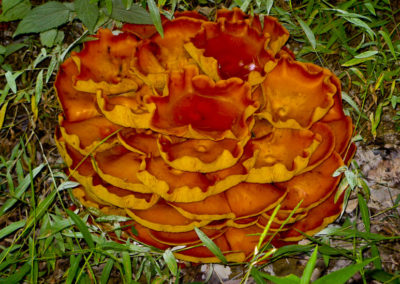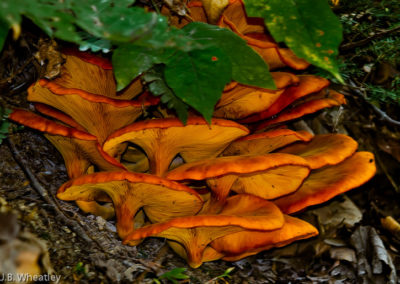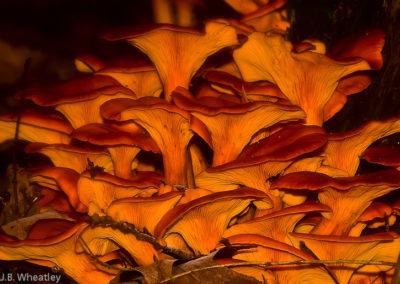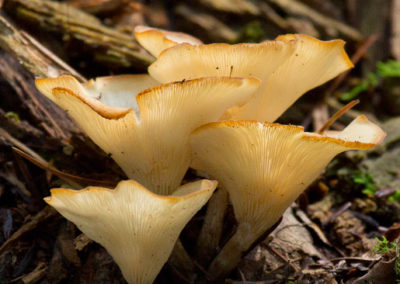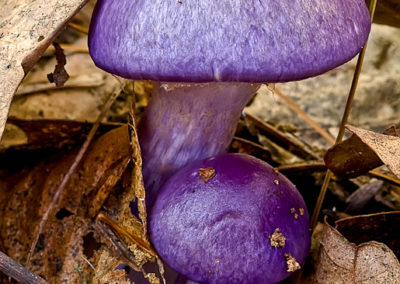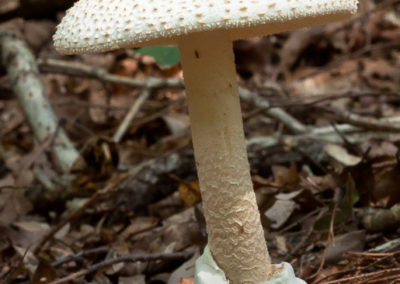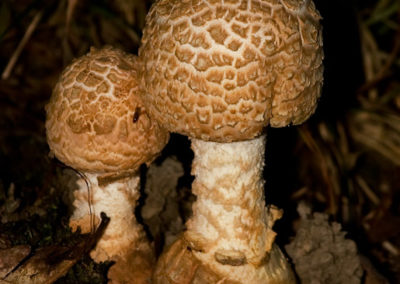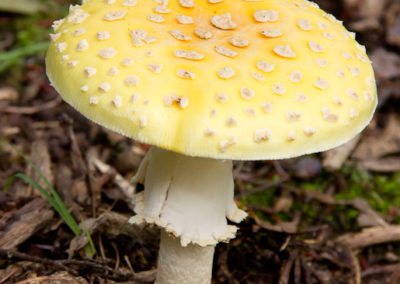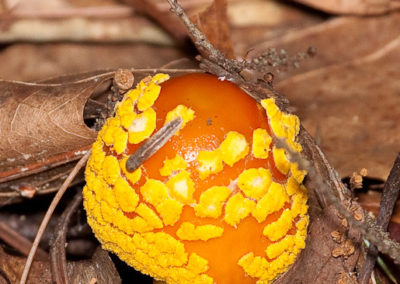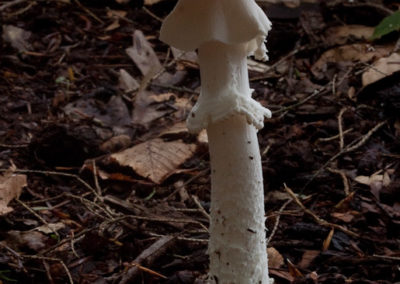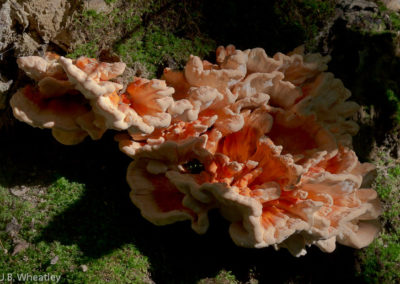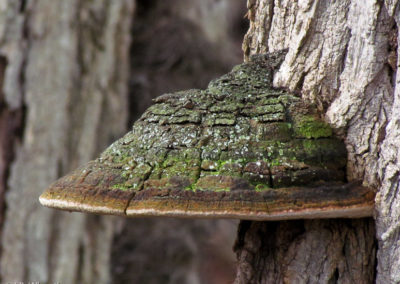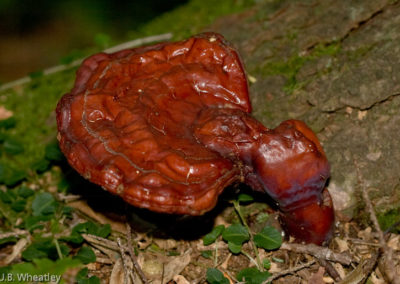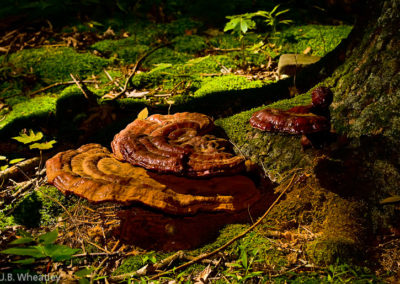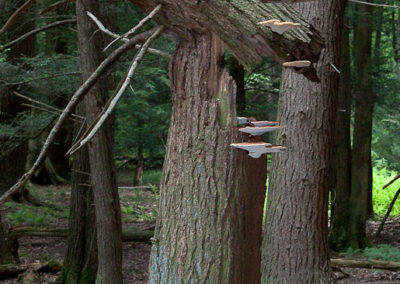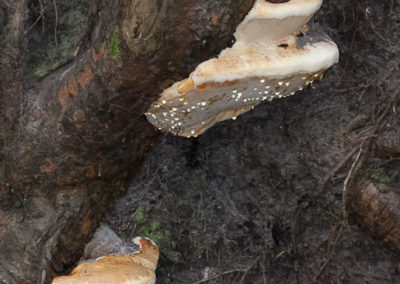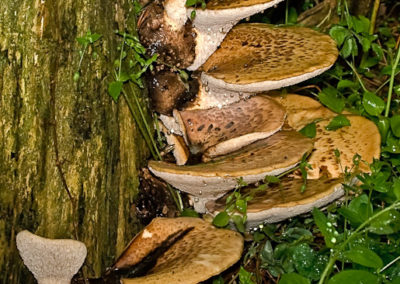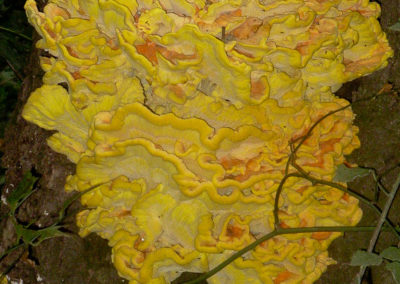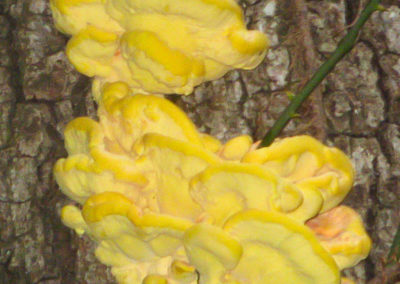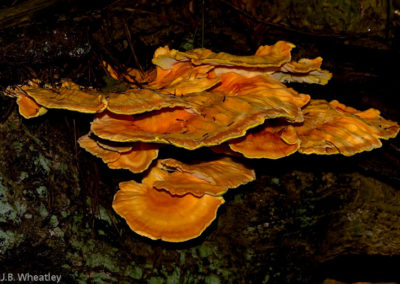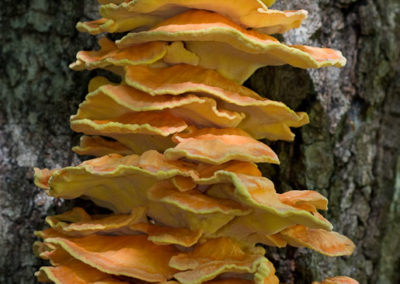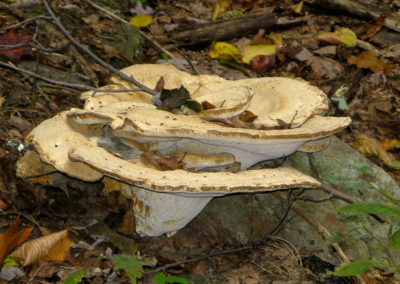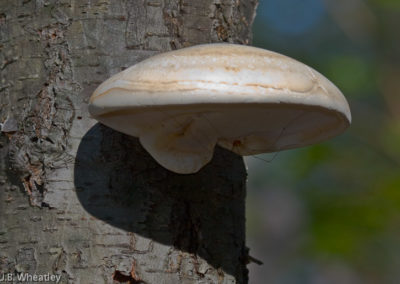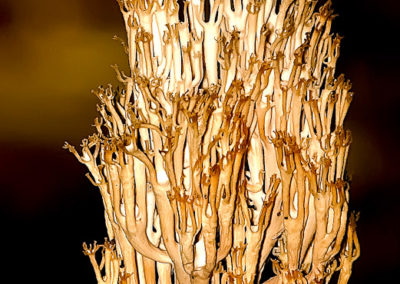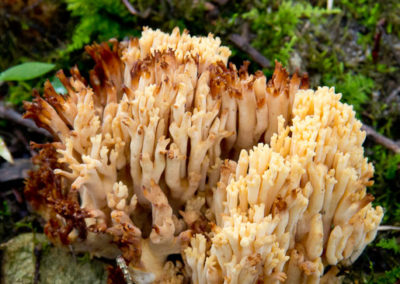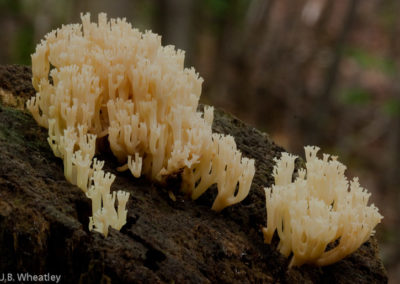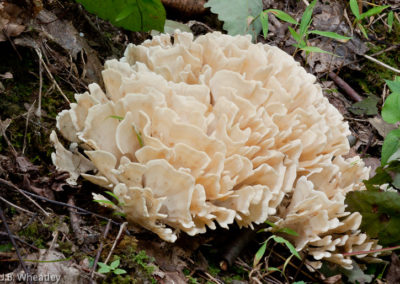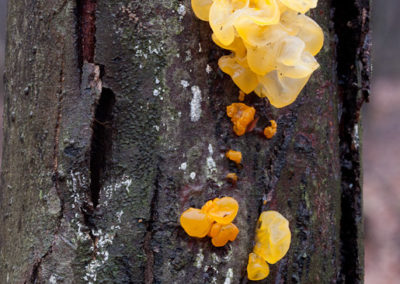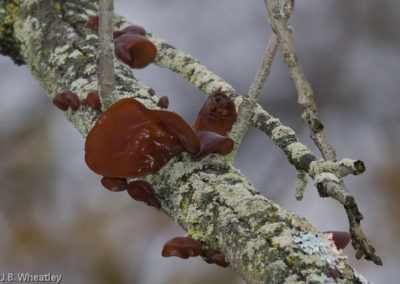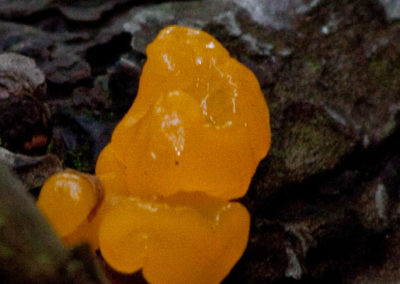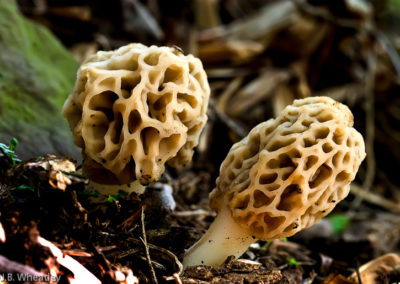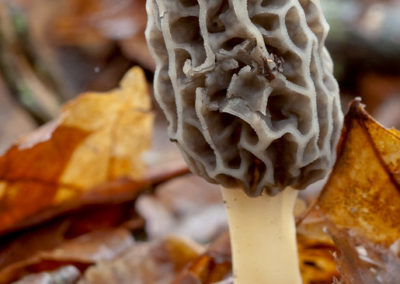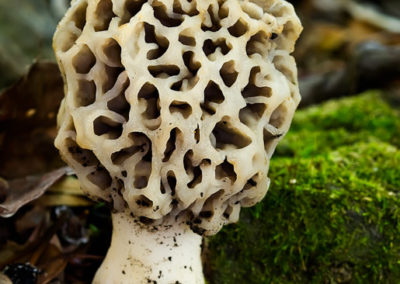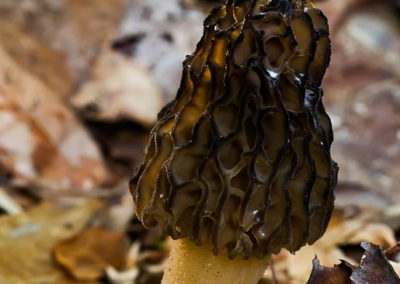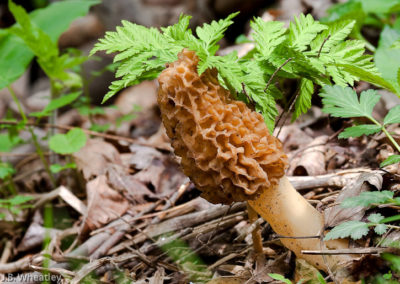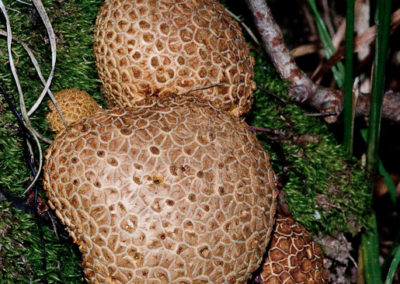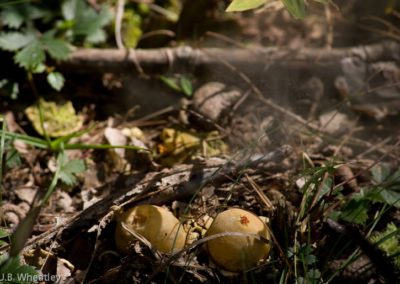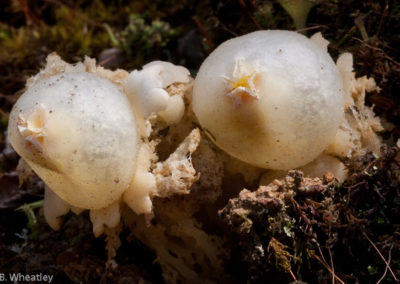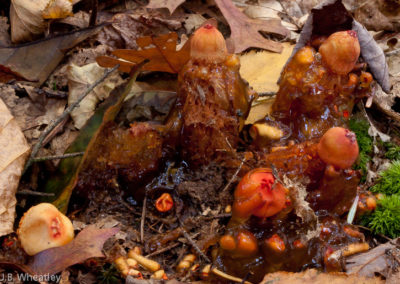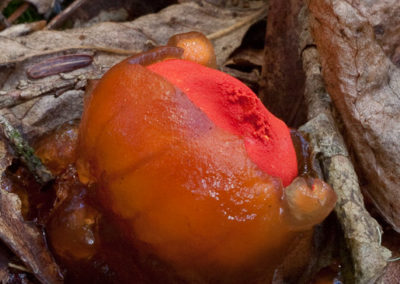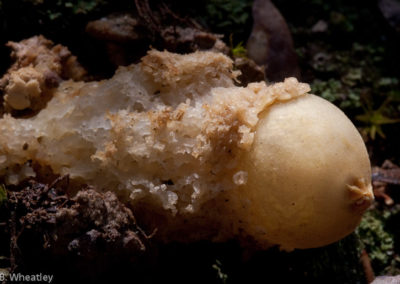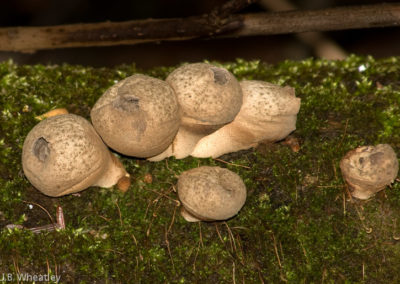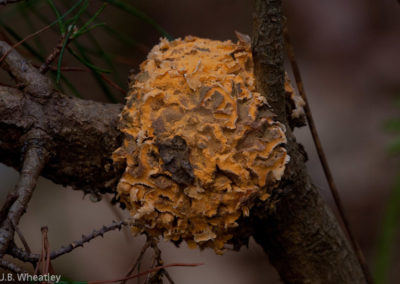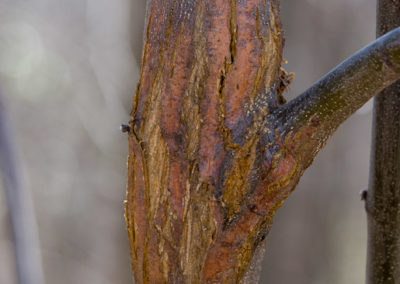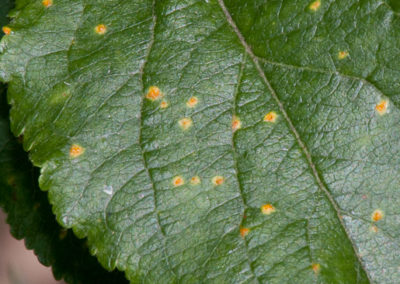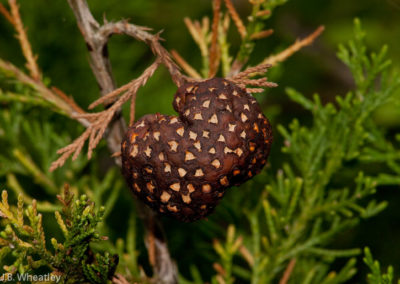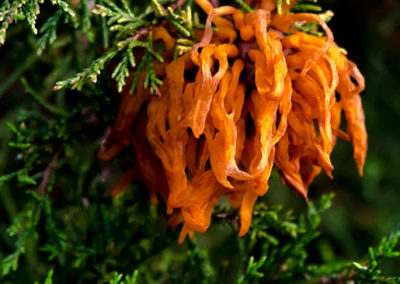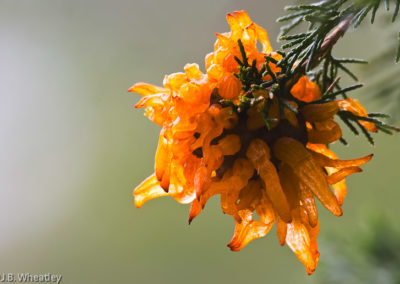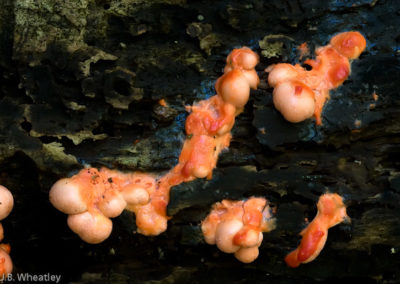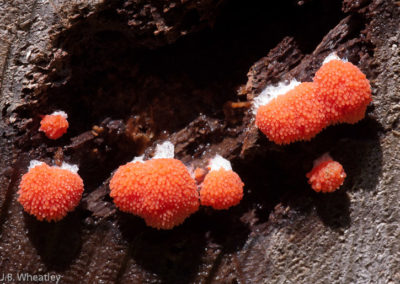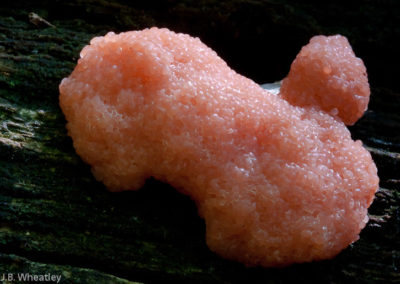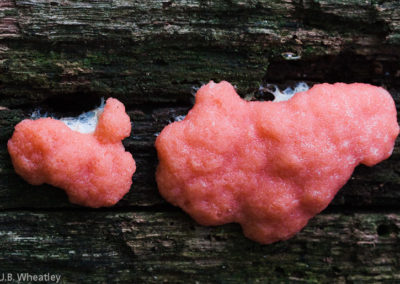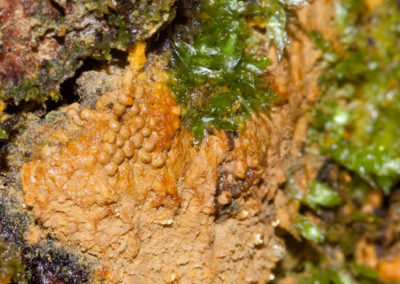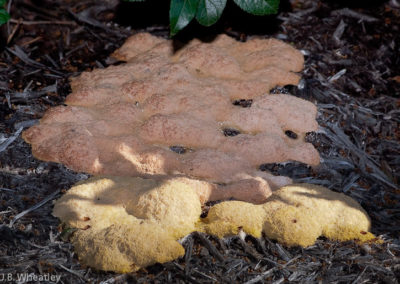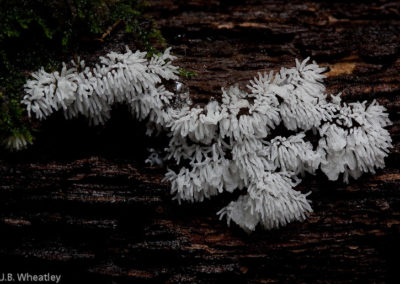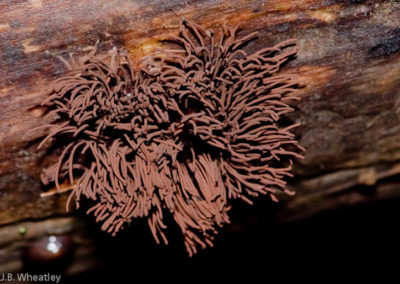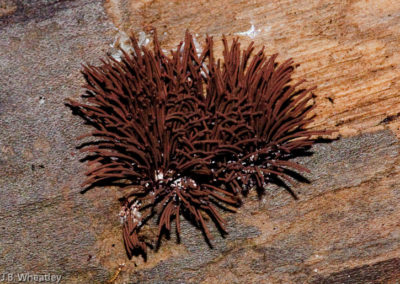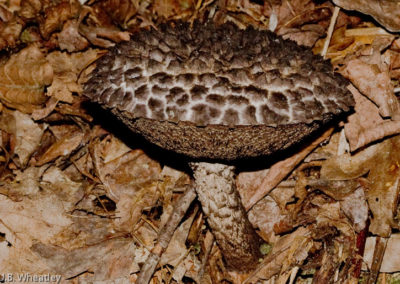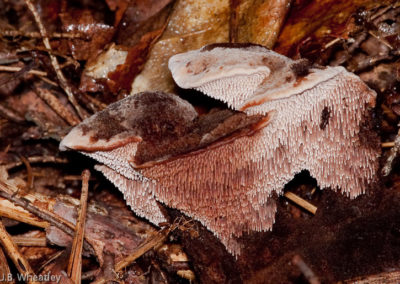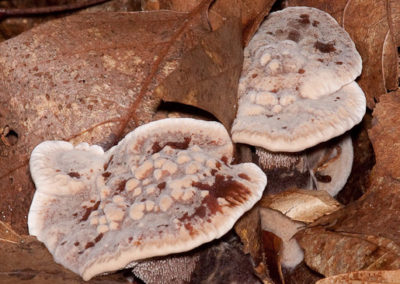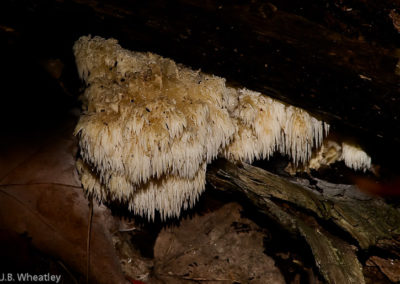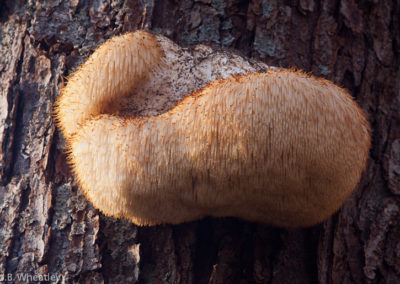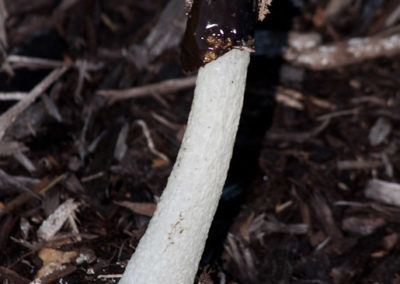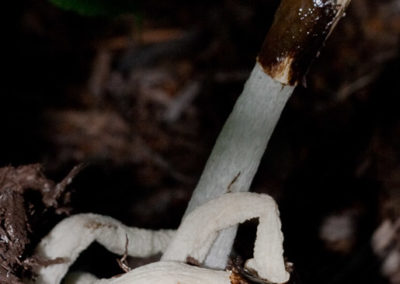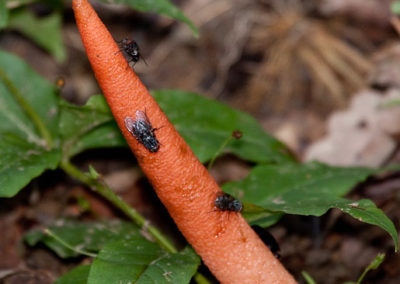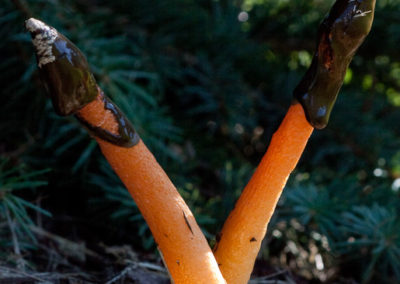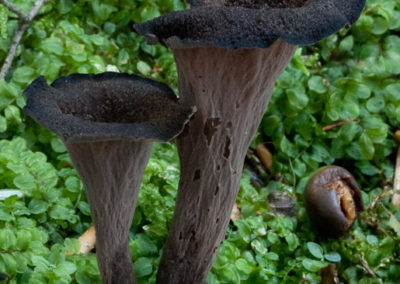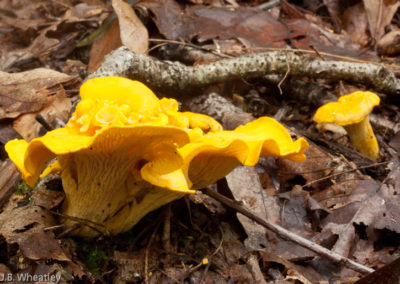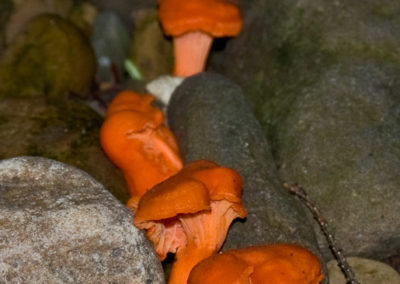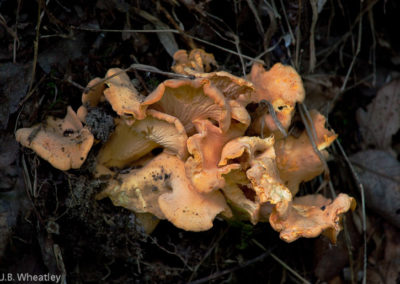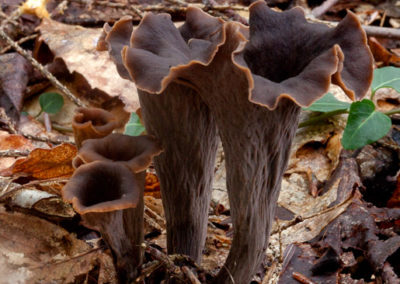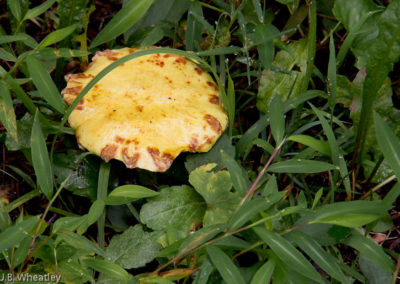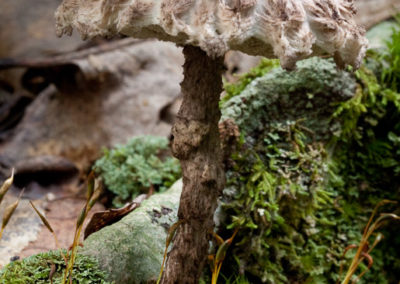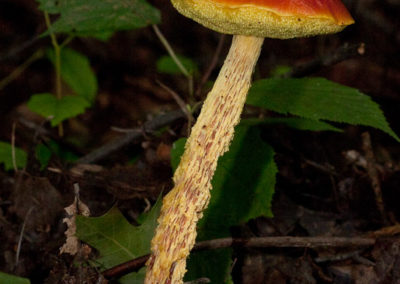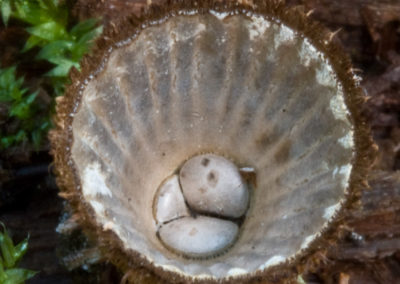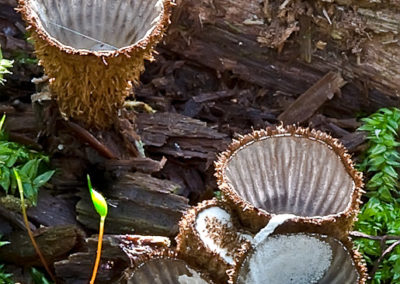Fungi, etc.
Here is my ignorance on full display. Fungi are remarkably difficult to identify, not just to species, but to genus, without the aid of a microscope. I hope that I am close on most of these, but all identifications should be taken with a large grain of salt. I have grouped these in ways that I hope will be useful. Note the etc.—that is for the slimemolds, which aren’t actually fungus. Note also that, where two scientific names are in use, I have listed what I think to be the less current name as an “aka.” Mushrooms change scientific names more than I change my socks.
Quick Notes:
Bird's Nest Fungi
To date, I have only photographed one of these. There is another species that used to grow on my doormat, but we burned that.
Boletes
With caps and stems, but the underside of the cap is a porous spongy texture. If you are serious about identifying these, take a minute to tear them apart and see if they bruise different colors. Sometimes, those color changes can be diagnostic.
Chanterelles
Chanterelles are often brightly colored and, at least in maturity, shaped somewhat like a trumpet. Look for blunt ridges, in place of sharp gills, that run fron the cap down the stem.
Coral Fungi
Coral-like fungi ranging from very small to very large.
Gilled Mushrooms
The gilled mushrooms contain most of the species that most folks think of when they think of a mushroom. A stem and a cap. The underside of the cap is covered by sharp-edged gills that radiate outward from the stem. These include some of our most familiar, most colorful, and most poisonous species.
Jelly Fungi
Mostly small, gelatinous fungi. Thes can be very difficult to tell apart without resort to a microscope. Try to note whether they are growing on hardwood on conifers, and note the time of year.
Morels
Morels are highly sought after edible mushrooms. If you see folks wandering through the spring woods with buckets, don’t ask them any questions. They do not like to share their secret morel hunting grounds.
Polypores
Sort of a grab bag of shelf and bracket fungi. Many of the polypores are important pathogens of trees, causing rot of the heartwood, which makes the tree subject to windthrow.
Puffballs
Puffballs look like various colored little ping pong balls. Some have warts or spines. The puff part comes from the spores that are released when the fungus is struck by a raindrop, or a finger.
Rusts and Plant Pathogens
A variety of species of fungus are extremely destructive of green plants. Most are less than photogenic, but I have captured a few.
Slime Molds
These are not actually fungi; they used to be, but science changed its mind. Many look slimy. Many look kind of like a mold. Some are kind of hairy. Some look amazingly like vomit.
Stinkhorns
Stinkhorns are those embarassingly suggestive fungus that tend to pop up in the most inappropriate places. They really like mulch. Every shot I have was taken in a church parking lot.
Toothed Fungi
A variety of fungi, usually growing directly on wood (sometimes buried). The toothed fungi are told by, well, the teeth-like spore-bearing structures.

